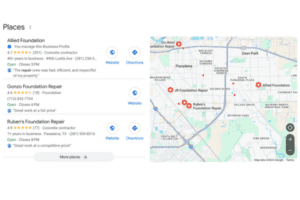At Captevrix we work with a lot of interns that may not understand the basics of blogging. This sparked my idea, as I know that our clients may not understand the anatomy of a blog either – but they don’t have to, it’s why they have us. I’m going to share with you the current dos and don’ts of blogging. Do keep in mind, the anatomy of any digital marketing platform changes all the time. As of right this moment, this is the right way to blog.
Google Wants To See Your Headers
That title above this sentence is what the pros call an H2 or Header 2. I have seen headers go as deep as Header 7. Headers have multiple purposes in your blogging strategy.
- First, it helps your end-user (your reader) scan your blog to see if it is relevant to them
- Second, it helps keep the reader focused and give them a heads up for what is in the next paragraph
- Third, when Google and other search engines notice the headers, they give more relevance to the readers’ search. But the headers have to be relevant
As you can see headers have an SEO purpose as well as a visual purpose.
Link To Your Anchor Page
I’m sure by now everyone knows and understands how anchor pages work. I touched base on anchor pages when it first emerged. You will want to make sure you link to your anchor page in your blog post. I highly recommend knowing what your anchor page is before writing your blog.
Have Your Key Phrase in Your Title
Make sure your key phrase is in the title of your blog and it should have about 60 characters. It’s kind of like the three bears porridge; you don’t want it too short but you don’t want it too long either. You want the title to be just the right length. To help you understand that character limit I thought I’d share a little tidbit from our friends at HubSpot.
- Headlines between 8 and 12 words are shared most often on Twitter.
- Headlines between 12 and 14 words are liked most often on Facebook.
If you are wondering if I actually count my characters for any blogs that I write, the answer is absolutely not! I have software that does it for me of course.
Use Bullets In Your Blog When You Can
Why use bullets in your blog posts? They help your rankings and make your blog easy to follow. Plus anytime you see bullets, you are compelled to remember that it is that information that you need to pay attention to. Am I right? I know it works on me and many of those in my field. Time is of the essence and anything to get us that knowledge any faster, we’ll take it….Including the bullets.
Do Link To Credible Sites
My rule of thumb is to link to at least (2) sites that are relevant to the topic at hand. It tells Google that you are using references and can back up what you say is true. Now, of course, I wouldn’t link to your competition. It has been my experience that every industry has sites they can reference for expertise. A great example is that the team at Captevrix likes to reference Hubspot for a lot of our blogs. They haven’t misled us yet.
Don’t Be Salesy
I’ve covered a lot of dos but now let’s discuss what you DON’T want to do in a blog. For the love all things marketing, leave the sales part up to the sales pros, not your blog. Everyone is so quick to ensure that whoever is reading their blog thinks they want to buy right then and there. This is not the case. They are simply gathering information. Is that not what you are doing right now? You don’t have to tell them to call you to buy or sign up on the blog, that is what you have CTA’s for. And please don’t tell them to go to your website, they are already there.
Broaden Your Scope of Information
Most businesses think you should only blog about what you do. That is simply not true. Blog about topics within your industry. We have done this before. Yes, we are a marketing agency, but we have touch-based on other services as topics that we don’t provide. It was simply us providing useful information back into the online community. For example, let’s say you own a foundation repair company. Eventually, you will run out of topics to write about that simply talk about foundation repair. But you could expand your content to include helpful outdoor cleaning tips for your home. You will still attract the same person that could very well need your services later.
No Keyword Stuffing
Long gone are the days that we write the same keyword in every sentence. Just let it flow naturally as you write your blog.
If you follow these few tips, your blogging performance should improve. If not give us a shout, I’m sure one of our team members can lead you in the right direction.















